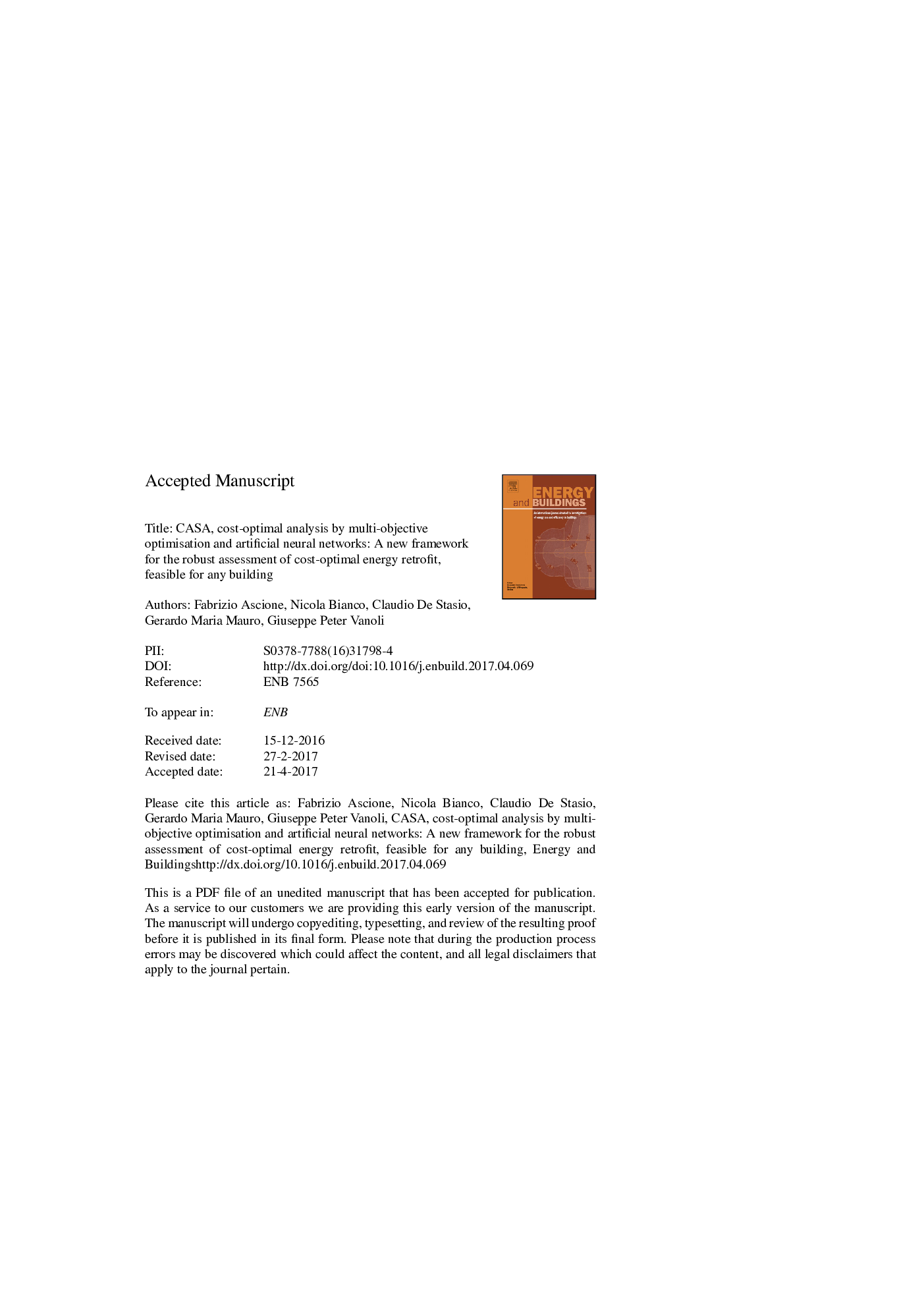| Article ID | Journal | Published Year | Pages | File Type |
|---|---|---|---|---|
| 4919225 | Energy and Buildings | 2017 | 50 Pages |
Abstract
The cost-optimal analysis provides the most cost-effective energy retrofit solutions. This can strongly support the deep renovation of buildings. However, an outstanding question arises: How to achieve the robust assessment of cost-optimal solutions, feasible for any building? The paper answers this question by proposing a new multi-stage framework for cost-optimal analysis by multi-objective optimisation and artificial neural networks, called CASA. It couples EnergyPlus and MATLAB®. A genetic algorithm allows to select recommended retrofit packages by minimizing energy consumption and thermal discomfort. Among these packages, the cost-optimal solution is identified. It is robust because the algorithm explores a wide domain of retrofit scenarios. The optimization procedure uses artificial neural networks to predict building performance. Large-scale uncertainty and sensitivity analyses are conducted to support the generation of the networks. These latter are tested against data provided by current literature with excellent results. The networks' applicability to whole building categories and rapidity of evaluation make the procedure feasible for any building. For demonstration, CASA is applied to a reference office building located in South Italy, by investigating the related category. The achieved cost-optimal solution produces global cost savings around 42.4 â¬/m2, and significant reductions of energy consumption, discomfort hours and polluting emissions.
Keywords
Related Topics
Physical Sciences and Engineering
Energy
Renewable Energy, Sustainability and the Environment
Authors
Fabrizio Ascione, Nicola Bianco, Claudio De Stasio, Gerardo Maria Mauro, Giuseppe Peter Vanoli,
